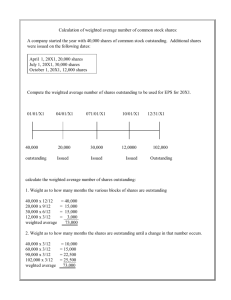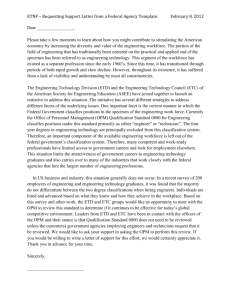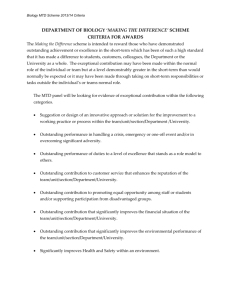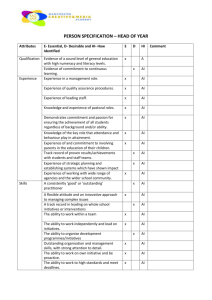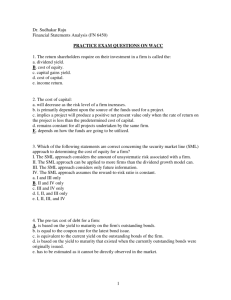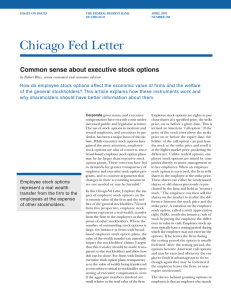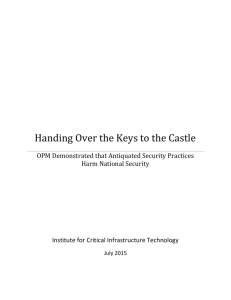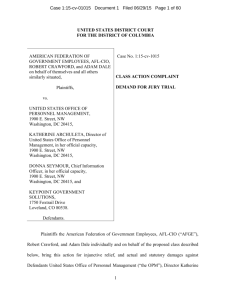A Simplified Treasury Stock Approach to Accounting for
advertisement
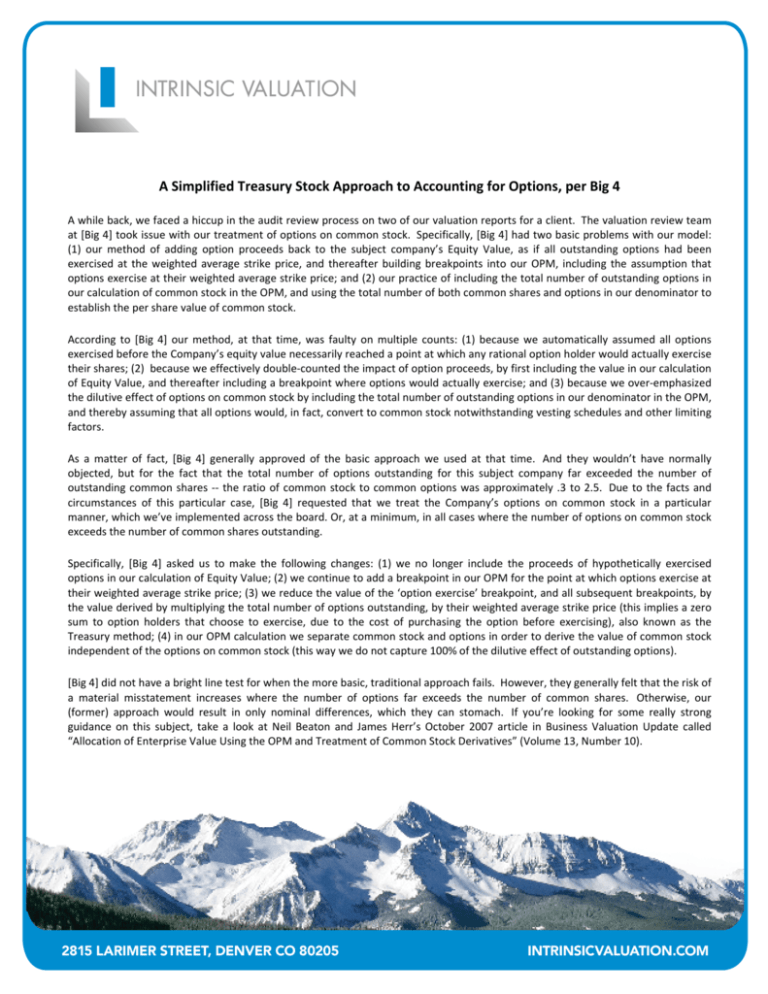
A Simplified Treasury Stock Approach to Accounting for Options, per Big 4 A while back, we faced a hiccup in the audit review process on two of our valuation reports for a client. The valuation review team at [Big 4] took issue with our treatment of options on common stock. Specifically, [Big 4] had two basic problems with our model: (1) our method of adding option proceeds back to the subject company’s Equity Value, as if all outstanding options had been exercised at the weighted average strike price, and thereafter building breakpoints into our OPM, including the assumption that options exercise at their weighted average strike price; and (2) our practice of including the total number of outstanding options in our calculation of common stock in the OPM, and using the total number of both common shares and options in our denominator to establish the per share value of common stock. According to [Big 4] our method, at that time, was faulty on multiple counts: (1) because we automatically assumed all options exercised before the Company’s equity value necessarily reached a point at which any rational option holder would actually exercise their shares; (2) because we effectively double‐counted the impact of option proceeds, by first including the value in our calculation of Equity Value, and thereafter including a breakpoint where options would actually exercise; and (3) because we over‐emphasized the dilutive effect of options on common stock by including the total number of outstanding options in our denominator in the OPM, and thereby assuming that all options would, in fact, convert to common stock notwithstanding vesting schedules and other limiting factors. As a matter of fact, [Big 4] generally approved of the basic approach we used at that time. And they wouldn’t have normally objected, but for the fact that the total number of options outstanding for this subject company far exceeded the number of outstanding common shares ‐‐ the ratio of common stock to common options was approximately .3 to 2.5. Due to the facts and circumstances of this particular case, [Big 4] requested that we treat the Company’s options on common stock in a particular manner, which we’ve implemented across the board. Or, at a minimum, in all cases where the number of options on common stock exceeds the number of common shares outstanding. Specifically, [Big 4] asked us to make the following changes: (1) we no longer include the proceeds of hypothetically exercised options in our calculation of Equity Value; (2) we continue to add a breakpoint in our OPM for the point at which options exercise at their weighted average strike price; (3) we reduce the value of the ‘option exercise’ breakpoint, and all subsequent breakpoints, by the value derived by multiplying the total number of options outstanding, by their weighted average strike price (this implies a zero sum to option holders that choose to exercise, due to the cost of purchasing the option before exercising), also known as the Treasury method; (4) in our OPM calculation we separate common stock and options in order to derive the value of common stock independent of the options on common stock (this way we do not capture 100% of the dilutive effect of outstanding options). [Big 4] did not have a bright line test for when the more basic, traditional approach fails. However, they generally felt that the risk of a material misstatement increases where the number of options far exceeds the number of common shares. Otherwise, our (former) approach would result in only nominal differences, which they can stomach. If you’re looking for some really strong guidance on this subject, take a look at Neil Beaton and James Herr’s October 2007 article in Business Valuation Update called “Allocation of Enterprise Value Using the OPM and Treatment of Common Stock Derivatives” (Volume 13, Number 10).

